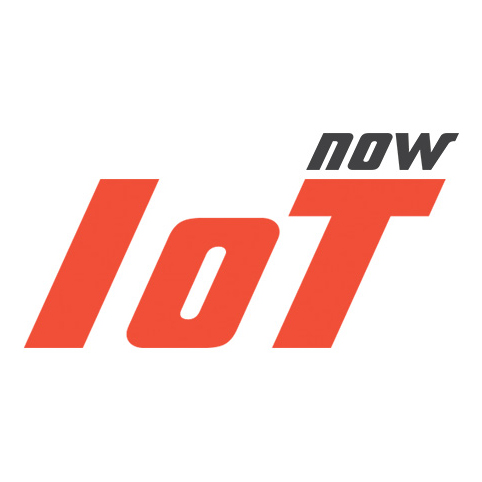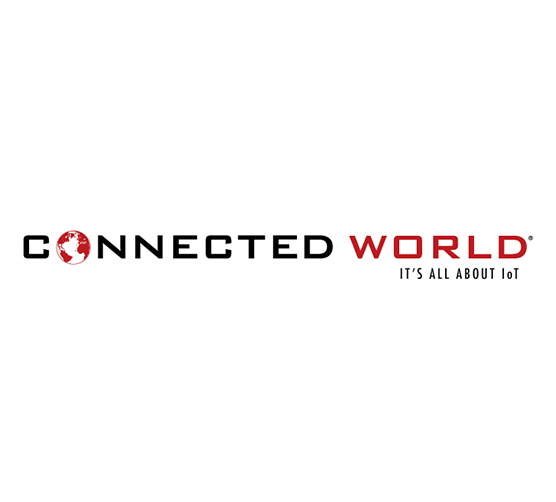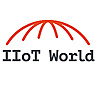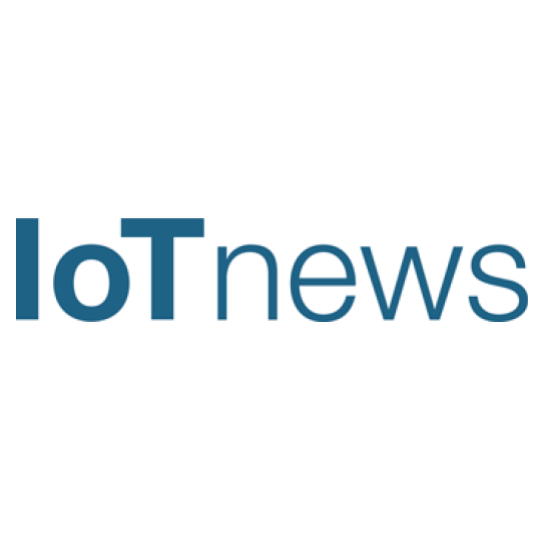
The COVID-19 pandemic shifted businesses in ways previously unimaginable. While many employees worldwide are still working remotely, and we begin returning to work at on-site locations, office life will look quite different. Many businesses turn to technology like smart office automation that utilizes the Internet of Things (IoT) to make workplaces safer and reduce costs, while companies rebuild lost revenue due to the pandemic.
What is IoT-enabled Smart Office Automation?
Using IoT technology for a smart office means that there are many devices in an office connected to the IoT, which allows remote control of them. These devices work and collect data without human interaction. With smart technology, offices can be more efficient than ever before, allowing the automation of menial tasks to have more time to work on worthwhile projects. There are numerous ways to take advantage of smart office technology.
Energy Consumption
Many devices work more efficiently on a timer. For improved in-depth control of energy consumption, businesses put systems and computers on a schedule. They turn on when people enter a certain area and turn off when they leave. Many smart offices choose to incorporate LED lighting, utilizing lights located within the flooring or along the walls to help people stay spaced a certain safe distance apart.
Tracking energy consumption allows a business to see whether scheduling or other changes reduce monthly expenses. For example, something as simple as scheduling people a half-hour later in the morning and evening to save on heating costs might reduce overall energy consumption significantly.
Office Climate Control is Easier than Ever
Smart thermostats were one of the first IoT technologies to become mainstream, but modern smart offices go far beyond what technology smart homes have. IoT technology allows the measurement and control of temperature, carbon dioxide (CO2), and humidity. This control enables a building or operations manager to create the optimum working environment for each employee. It is possible to have a system for automatically controlling the blinds, resulting in a decreased need for heating and cooling.
Using smart technology for climate control is one of the easiest and cost-effective ways to implement IoT smart office automation. Control of air conditioning or heating is adjustable based on the time of day and controlled remotely. Businesses can take it a step further and automatically turn the climate control on or off depending on whether there are people in a room.
Consider this typical case:
Imagine an employee sitting near a window. When the sun starts to shine onto their face, smart blinds receive the signal and automatically drop. The adjustment to the blinds can happen at a particular time of day or after the monitoring system receives the sensor information indicating the need for adjustment.
Smart Furniture Increases Productivity
Smart office furniture, such as desks, chairs, and even dividing walls, can increase productivity and improve the employees’ mood. Having control over their desks, for instance, can give them the option of including goals for how often they want to go from sitting to standing. Employees can automatically adjust the height of their workspace, or if they prefer, receive data about their behavior throughout the day or week.
Smart mirrors used in restrooms or elsewhere in the office display pertinent information and play videos. Smart mirrors used in conference rooms, entryways, or lobbies make effective presentations. Clients and guests appreciate smart mirrors. Using them enables a business to make a positive first impression.
Smart Office Security Solutions Save Companies Money
Smart office security solutions using IoT technology go beyond simply controlling cameras remotely. They can use voice and face recognition to tell who has entered a building, where a person is, and how many people are in the office. This allows companies to keep track of how close they are to building capacity and making sure no unauthorized people are in secure areas.
Security automation can often save money on security staff since they can use smart technology to keep track of who is going in and out of the building. The security automation formulates reports and sends alerts for specific events. Companies can receive a notification when the last person leaves the office for the day so that staff can make sure the security system is armed. The system automatically creates reports of who was in an office and giving companies more data about optimizing the movement in their building and who might be involved in security breaches.
Another smart security solution includes placing trackers on high-value items, which reduces the threat of physical theft. In certain businesses, this can be a huge benefit, with the ability to get alerts when an object is moved or crosses a certain threshold.
Smart Scheduling for a Post-COVID Office
Scheduling is critical in a post-COVID office. IoT technology makes it much easier to keep staff at an optimum number of people throughout the day to ensure compliance with safety practices. Companies can create a check-in process and monitor any potential warning signs. This system enables companies to keep track of who was in the same room and parked their cars using smart parking solutions.
Smart scheduling can cut down overtime and stagger start and leave times so that people can have a more flexible schedule while keeping the number of people in the same areas at a minimum. Smart scheduling can automatically create a master plan that considers all staff members’ preferences and meets the company’s overall requirements.
Smart scheduling for IoT-enabled devices and networks is useful in a post-COVID office environment. Companies can automatically create schedules for IoT items needed to match employee schedules. This is convenient if employees call in sick because their workspaces can adjust automatically if they are not at work. Making real-time changes to IoT schedules is one of the best uses of smart office technology.
Smart Inventory Keeps Businesses Running Smoothly
Smart inventory is one of the most time-saving IoT integrations that companies can add to their operations. Instead of spending hours each week or month counting inventory items manually and updating an outdated excel or paper document, smart office track inventory using Radio Frequency Identification (RFID) Tags. This smart method gives a more precise valuation of inventory assets.
Not only can IoT technology track the overall amount of inventory, but RFID tags can also assess the time and exact location of the last scan of each label. Companies have a better idea of how their inventory is counted, moved, and used. With real-time utilization reports, it is easier to identify problems, such as production bottlenecks, employee theft, and order issues.
Smart inventory can automatically generate reports showing the optimal amount of product to order based on the lead time so that companies are always on top of consumer demand. The longer a company uses RFID technology to track inventory, the more accurate it becomes, so a business using this technology becomes more efficient over time.
In addition to RFID technology, companies can attach trackers to items with a high occurrence of loss or theft to see how they might make their movement through the production process more secure and efficient. This technology is beneficial for IoT applications with a large inventory. The physical placement of inventory may make a huge difference in business efficiency.
AI Tracking Systems and Security
AI tracking systems offer numerous advantages that add security and convenience.
One advantage of AI tracking systems is that they help determine the number of people in the office using facial recognition technology. Configure the system with a simple greeting that sounds when a security camera detects someone in the vicinity.
Information from the tracking system can connect people from different departments using an internal app or web program, offering safety and convenience. For example, if someone forgets a key or has another problem, it is easy to quickly connect them with someone else in the office to assist.
AI Chatbots
Another interesting enhancement for a smart office is artificial intelligence (AI) chatbot, making an office more comfortable and safe. AI chatbots help reduce energy consumption, simplify booking meeting rooms and time logging, and increase workplace security.
An AI chatbot, integrated with Slack or Telegram, enables all company employees to access systems without additional software. An AI chatbot can execute many commands. By request, the chatbot enhances smart office automation and gives useful information such as data from sensors, the number of people in the office, and colleagues’ current location.
IoT Security Concerns for Smart Office Applications
IoT security concerns are a real threat, especially as this technology is rapidly advancing. One of the main security concerns is a “botnet” attack. Such an attack happens when an IoT network is compromised by hackers who infiltrate many networks to harvest information. It is essential to utilize the most up-to-date security guidelines and ensure all networks are secure.
Many high-profile security breaches involve vulnerabilities in IoT technology in smart office automation and across large networks. Security analytics help an organization stay ahead of the curve when it comes to securing its IoT network. The analysis of relevant data helps IT security managers become aware of weak areas and possible threats. Network segmentation is a valuable IT security strategy. Using network segmentation, if a single part of an IoT system is compromised, a hacker does not gain access to the entire network.
Consulting with a professional IoT development company to ensure a network’s security is a wise choice, especially if sensitive data may be accessed via cloud computing or on network computers.
Here are important points related to the improvement and automation of the security in the smart office:
- SSL certificates are mandatory. Transferring data with the help of REST should be implemented through HTTPS. In the case of MQTT, an SSL certificate is required.
- Local servers and local networks without access to the Internet are secure.
- To ensure remote access without any serious security risks, companies can opt for a local server with a remote VPN connection.
- Two-factor authentication and a one-time password can be easily implemented to increase security.
- Cloud solutions include needed tools that protect data.
- Additional services like Cloudflare can be used for protection and security when transmitting sensitive data.
An Engineering Approach to Building Smart Office Automation Ecosystem
There is no unified architecture for IoT-based smart office solutions. Each project requires a unique approach, beginning with clarifying the project’s goals and requirements.
Let’s look at the possibilities IoT technologies provide and what approaches could be useful for such situations.
To create an architecture and implement a smart office automation project, one must work in reverse order. First, gain an understanding of what kind of sensors are necessary. Then, determine what data needs collection and the devices managed by the system. Floor plans are reviewed because they show distances and the locations of the power supply for sensors.
Sensors have to transmit the data via communication protocols. The most popular type of protocol for transferring data from edge devices to a cloud-based server is MQTT, a network protocol designed to operate with data packages but not real-time data streams. The main advantages of MQTT are low energy consumption and high reliability. This lightweight protocol is suitable for IoT devices where the communication is under unstable network conditions.
Notably, transferring data to edge devices on the IoT can also be based on other protocols such as OPC, Modbus, and TCP. These protocols differ from each other. For example, OPC is the standard for industrial data exchange. It refers to independent open interface standards. OPC is useful in industrial IoT communications.
Modbus is a serial communication protocol, serving signal transmission from a control device to the controller. The Modbus protocol is for data gathering that is built-in for different systems, such as a system that measures temperature or humidity and then transfers the results to a monitoring computer program. The third internet protocol is TCP, which is the most commonly used type of protocol. TCP-IP is the transport-layer protocol for IoT.
The Network (Sensor-IoT Hub) Layer
The first one is to use wires to connect sensors and the end devices with a controller. This approach is the most reliable for IoT-enabled smart office solutions.
The second approach uses a wireless connection. This solution is the best option if the office renovation is complete because there is no need to lay wires. There are different options available with a wireless connection: Zigbee network, Z-Wave network, Wi-Fi, and BLE.
Each option has pros and cons. What works best for an individual project depends on the number of devices on the network, the coverage area, and its budget.
Recently, Zigbee experienced a rise in popularity since the introduction of Zigbee 3.0, with its long-distance range, speed, level of security. The increased demand for Zigbee comes from the strong value proposition of price and benefits. For standard IT networks, using any of the solutions mentioned above, a hub is necessary. The hub must connect to a local network. The hub converts data received from the sensors, followed by the subsequent publication of the data to a local server or cloud-based computer, depending on the project’s specifications.











 Latest IoT News
Latest IoT News









